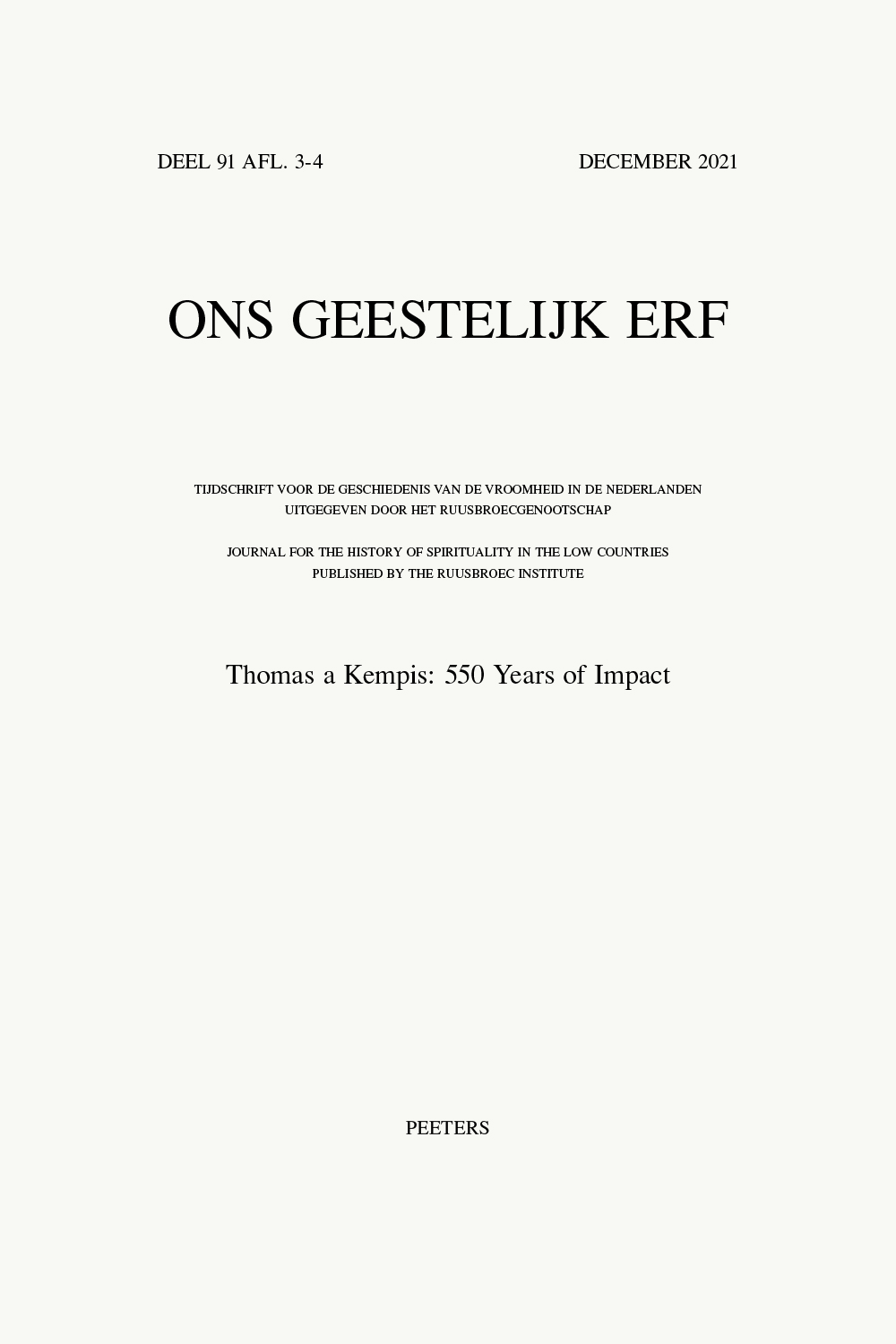 previous article in this issue previous article in this issue | next article in this issue  |

Preview first page |
Document Details : Title: Sitting with Christ in the Cenacle Subtitle: A Gospel Harmony in a Female Community of the Devotio Moderna Author(s): TUCKER, Luke Journal: Ons Geestelijk Erf Volume: 92 Issue: 2 Date: 2022 Pages: 151-168 DOI: 10.2143/OGE.92.2.3290908 Abstract : The imaginative capacity of communal reading within female communities of the Devotio Moderna has received less scholarly attention in comparison to personal, private reading. While personal reading was a salient feature of the daily, weekly, and yearly rhythms of the women of the New Devout, reading could also function in a communal context with a socially constitutive effect. I set out this function by analysis of a gospel harmony read at mealtimes in the sister-house at Diepenveen of the Devotio Moderna of the fifteenth century, arguing that the sisters’ communal reading of the Diepenveen harmony allowed them to imaginatively sit at Christ’s feet and consider themselves as the Apostles in the Cenacle during the Last Supper. This gospel harmony was to be read in the sisters’ refectory and its content focused on the Last Supper (where the content began), imaginatively joining the sisters to the apostolic circle and, by association with mealtimes, therefore also to the Eucharist. The harmony had daily readings that matched the liturgical calendar running up to the final day of Pentecost. The sisters were therefore dramatically reenacting the Last Supper narrative playing the role of the male Apostles as the feast of Pentecost approached. Furthermore, this sort of reading was suffused with Eucharistic undertones – particularly so given that as the sisters ate, they listened to Christ directly address them and describe himself as food for them in the overlapping settings of Cenacle and refectory. Communal reading in this sister-house at Diepenveen therefore allowed for an experience higher time – the collapsing of chronos into a single kairotic moment where the sisters sat alongside, even in the place of, the Apostles with Christ – constituting the the sisters’ community as that of Christ’s first disciples. |
|


